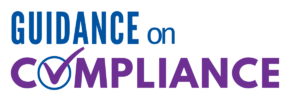With the General Compliance Program Guidance updates released in November 2023, we wanted to take the 7 elements of a compliance program and break it down. What are the 7 elements? Why are they important and how can these elements be implemented? We will go through 1-4 below & you will be able to find 5-7 on Part 2 of this blog.
This blog will be valuable if you are new to compliance or if you need a refresher.
1. Written Policies and Procedures
All compliance programs are supported with written policies and procedures. These policies create an outline for staff to follow in performing their job roles, capturing documentation requirements and steps for implementing and mitigating compliance risks by establishing job performance expectations.
Why is This Important?
- Policies and procedures establish the basis of all compliance programs. They outline the standards and expectations of staff and are there for staff to review if they have any questions on how your organization’s compliance program works. They are a guide that your organization follows to maintain compliance.
How?
- Develop a code of conduct so your organization’s mission, goals and ethical requirements are known.
- Review your compliance risk areas and develop policies and procedures that support these risk areas.
- Develop a plan to manage these policies and procedures, including reviewing and updating policies and procedures on a regular basis. It is also important to provide staff with access these policies and procedures when needed.
2. Compliance Leadership an Oversight
The second element of a compliance program is to develop compliance leadership and designate a Compliance Officer or designee. This Compliance Officer will be responsible for managing and monitoring your organization’s compliance program including reviewing and communicating compliance risks, developing the compliance committee (if needed), providing regular updates to the compliance committee, reviewing and revising the compliance program, investigating compliance concerns, as well as additional responsibilities outlined in the General Compliance Program Guidance.
If your organization is large enough to require a Compliance Committee, the Compliance Officer will oversee the selection of the individuals on this committee. The committee is developed to support the Compliance Officer. When the compliance committee is present, the committee is required to have regular meetings to assess your compliance program and discuss the steps necessary to maintain your compliance program.
Why is This Important?
- The Compliance Officer is established to hold your organization accountable to the compliance program’s support of federal and state regulations. This individual will be responsible of evaluating the organization’s risks and ensuring that the compliance program is being enforced and regularly updated and reviewed so nothing falls through the cracks.
- The Compliance Committee helps to enforce the compliance program and provides additional support for the Compliance Officer. Additionally, the committee will help generate an awareness of the risks to maintain a successful compliance program.
How?
- Designate a Compliance Officer that has the proper training and credentials who is willing to organize a plan for compliance.
- Make sure to create a line of communication with the CEO, BOD, and Legal Counsel and develop a Compliance Committee.
- Create a plan so that all compliance activity is easily reported to the board and the compliance committee.
- The Compliance Officer should organize an annual compliance plan review, any risk assessments, and any educational features in the efforts to be compliant and to integrate the program effectively.
3. Training and Education
A cornerstone to a compliance program is training and education. A compliance training plan should be developed along with the compliance training that should be reviewed annually by the Compliance Officer and required for staff to attest to annually.
Why is This Important?
- Regular training and education holds all staff to the same accountability and standards. It also allows any additions or changes to the compliance program to be addressed or reinforced.
How?
- The Compliance Officer and/or Compliance Committee should develop a compliance training plan as well as annual training to be reviewed and distributed to staff on an annual basis.
- Develop a process to complete an update annually, at a minimum, or as needed. This plan includes a process for distributing the training to current staff, BOD, volunteers, and vendors are needed.
4. Effective Lines of Communication with the Compliance Officer and Disclosure Programs
It is important an organization has lines of communication with the Compliance Officer and a program in place where staff can report compliance concerns or ask compliance related questions. Once this is developed, the form of communication should be communicated with staff and should be posted in a known location.
As part of this element of the compliance program, it is expressed that organizations should ensure that they have confidentiality and nonretaliation policies in place to encourage this communication with staff. This should include the protection of whistleblowers.
Why is This Important?
- Effective lines of communication allow for quick feedback, thus allowing the problem to be easily corrected and concerns to be addressed readily and timely.
How?
- Develop the lines of communications for staff to communicate any concerns and ask questions.
- Make sure that these lines of communication are communicated with staff and posted for staff to access.
- Make sure policies are in place for non-retaliation and confidentiality.
Check back next week for Part 2 – the breakdown of elements 5 – 7 of a Compliance Program.
How Can LW Consulting Inc. Help?
LW Consulting, Inc. can help to alleviate some of the stress that comes with maintaining your compliance program. We have experience completing risk analyses and helping to identify gaps in your current compliance program, as well as helping to guide organizations in creating policies and procedures to fill those gaps.
LW Consulting, Inc. (LWCI) offers a comprehensive range of services that can assist your organization in maintaining compliance, identifying trends, providing education and training, or conducting documentation and coding audits. For more information, contact LWCI to connect with one of our experts!


